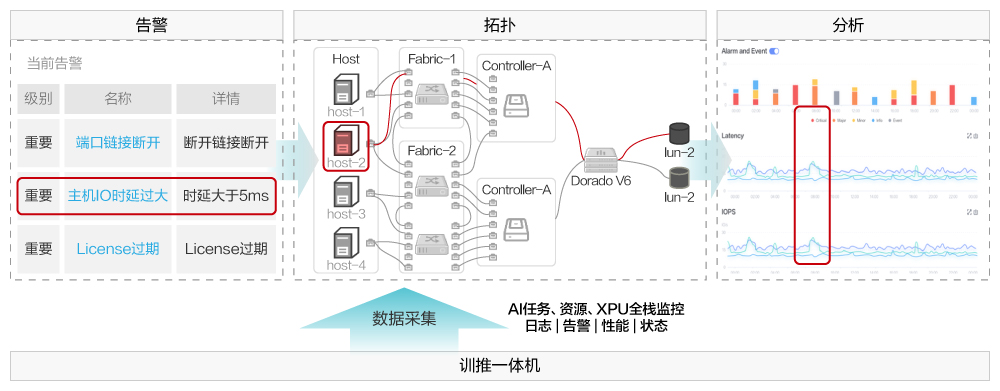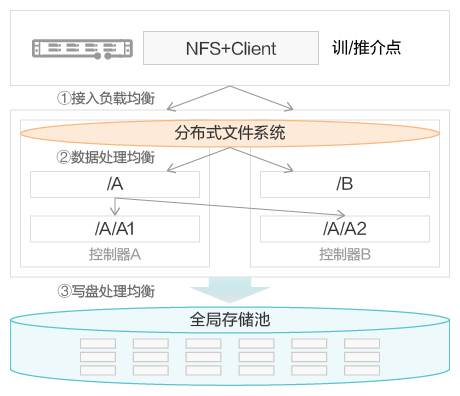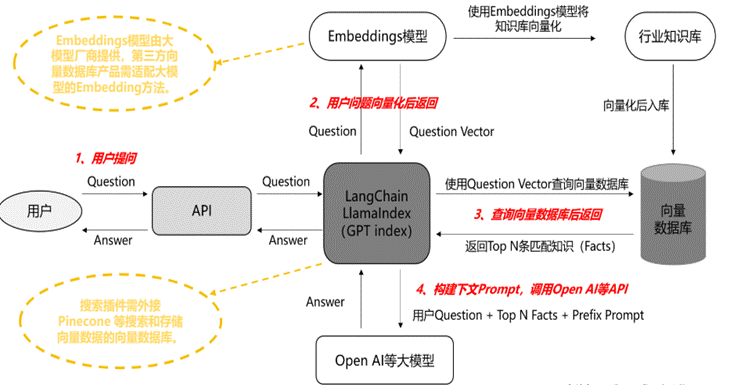With the continuous development of artificial intelligence technology, more and more enterprises begin to apply AI technology to their own businesses to improve efficiency and reduce costs. In this process, model deployment becomes an important challenge. Especially when deploying L2 models on a large scale, enterprises are facing more severe challenges.
First, difficult model deployment is a common problem. When deploying L2 models, enterprises need to consider hardware selection, delivery cycle, and O & M management. In addition, model deployment requires a certain amount of time and human resources, which will also have a certain impact on the operation of the enterprise.
Secondly, the high training cost is also a problem to be considered. Large models require a large amount of computing resources for training, which also increases costs. In addition, because large models require a large amount of memory to store parameters and intermediate results, high-memory computers or servers are required, which also increases costs.
Third, the difficulty of data access is also a problem that needs to be considered. In the case of multiple machines and multiple cards, data needs to be shared, which also increases the difficulty of data access. In addition, the random read and write speed of large amounts of small files is slow, and the CheckPoint storage time is long, which also affects data access.
Finally, the possibility of model leakage is also a problem to be considered. Inference models are easy to be stolen, and the high value of industry data is easy to be stolen, which will also pose a certain threat to the security of enterprises.
To sum up, the challenges faced by large-scale deployment of L2 models are various. Enterprises need to fully consider hardware selection, delivery cycle, operation and maintenance management, training costs, data access, and security to ensure the smooth deployment and operation of the model. At the same time, enterprises also need to strengthen the security protection of the model to avoid the losses caused by model leakage to enterprises.
Out of the box
from the perspective of AI infrastructure construction, it is a small/micro ICT requirement, including computing, network, storage, security and other requirements.
The traditional AI infrastructure procurement model has the following problems:
1. Multiple devices, subcontracted procurement: AI infrastructure requires a large number of devices, including servers, storage devices, network devices, etc. Therefore, the procurement process needs to be subcontracted. This increases procurement costs and management difficulties.
2. There is no overall construction plan and integrators are required to intervene: in the AI infrastructure procurement process, there is a lack of overall construction plan and integrators are required to intervene and integrate and configure equipment. This increases procurement costs and management difficulties.
3. The delivery time of the equipment is inconsistent and the process is complicated: the equipment is received multiple times and the process is complicated, which requires a lot of time and energy.
4. IT is time-consuming and laborious for professional IT personnel to assemble on-site on business trips: IT requires professional IT personnel to assemble equipment on-site on business trips, which will consume a lot of time and energy and increase delivery costs and management difficulties.
In view of the problems existing in the traditional procurement mode, we need to gradually evolve from the traditional & ldquo; Combination & rdquo; Mode to & ldquo; Full Stack & rdquo; Integration direction, the one-stop solution is used to meet the requirements of the full-stack AI infrastructure, reducing the complexity of the solution, O & M complexity, and deployment complexity.
Training and pushing all-in-one machine is an AI platform that integrates the mainstream big model with full stack software and hardware tuning. Its appearance provides a brand-new solution for enterprises, it can help enterprises train, evaluate and predict AI tasks more efficiently.
First of all, the one-stop procurement function of the training and push all-in-one machine can provide enterprises with a variety of model parameter scale selection configurations, such as 8B, 13B and other typical configurations, in this way, enterprises can choose the most suitable configuration according to their own needs.
Secondly, the whole frame design, delivery and receiving functions of the training and pushing all-in-one machine can save the tedious assembly and debugging process for enterprises, thus saving time and labor costs, let enterprises focus more on the implementation of AI tasks.
Third, the training and push all-in-one machine integrates the mainstream big model, optimizes the whole stack software and hardware, has the abilities of training, evaluation, prediction, etc., and integrates the design of training and reasoning. This means that enterprises can complete the entire AI task process on one platform.
Full Stack hardware and software O & M
due to the complexity and high integration of AI training and reasoning all-in-one machine. This device needs to manage hardware and software at the same time, including CPU, GPU, memory, storage, operating system, deep learning framework and other components, the interaction and influence between these components are very complex. Therefore, in order to ensure the stability and reliability of the device, full stack operation and maintenance features are required to identify and solve problems in a timely manner.
The full stack O & M software needs to integrate various management and monitoring tools to comprehensively monitor and manage the equipment. For example, you can use system monitoring tools to monitor CPU and memory usage, network monitoring tools to monitor network bandwidth and latency, and security management tools to protect devices from malicious attacks, use performance management tools to optimize device performance and so on.
The benefits of full stack O & M are as follows:
first, the training and push all-in-one machine supports four levels of monitoring, including component level, node level, cluster level and AI task level. In terms of component-level monitoring, the training and push all-in-one machine can monitor the status of CPU, GPU, PCIE, storage and other components to find and solve problems in time. In terms of node-level monitoring, the training and push all-in-one machine can monitor the status of nodes, discover and solve node faults in time. In terms of cluster-level monitoring, the training and push all-in-one machine can monitor the status of the entire cluster, detect and solve cluster faults in a timely manner. In terms of AI task-level monitoring, the training and push all-in-one machine can monitor the status of AI tasks, discover and solve task faults in a timely manner.
Secondly, the training and push all-in-one machine supports the full-Link topology from the task perspective, automatically constructs the full-Link topology view of the task, and visualizes fault analysis and drill-down fault analysis. This means that users can quickly locate task faults and perform drill-down fault analysis through the full-Link topology view of the all-in-one training machine to better solve the problem.
Finally, the training and push all-in-one machine supports global problem search, one-click search of task resources, automatic sorting of resource relationships, and one-second aggregation. This means that users can quickly find relevant resources and perform one-click search through the problem global search function of the training and push all-in-one machine. At the same time, the training and push all-in-one machine can automatically sort out Resource Relationships and gather resources in one second, making it easier for users to manage resources.
These functions can help enterprises better manage AI tasks, discover and solve problems in time, and improve efficiency and accuracy. 
Efficient Data processing
the pain points of reading data in big model training mainly include the following aspects:
1. Large amount of data: large models require a large amount of data for training, and these data usually need to be read from distributed storage systems, which requires efficient data reading and transmission technologies.
2. Diverse data formats: different data formats require different processing methods, while large models usually require multiple data formats at the same time, which requires flexible data processing capabilities.
3. Different Data Quality: large models require high-quality data for training, but in fact, data quality is often not satisfactory, which requires data cleaning and preprocessing.
The benefits of shared storage for AI mainly include the following aspects:
1. Improve data sharing efficiency: shared storage allows multiple AI models to share the same data, avoiding repeated data storage and transmission, and improving data sharing efficiency.
2. Improve data security: shared storage can manage and control data in a unified manner, avoiding data leakage and abuse, and improving data security.
3. Improve data utilization: shared storage allows multiple AI models to use the same data together, avoiding data islands and waste, and improving data utilization.

A large number of small files are involved in the training and promotion scenario. Shared storage requires multi-level balancing to accelerate the concurrency of large amounts of small files and improve the training efficiency:
1. Access SLB uses multi-IP aggregation and multi-path technology to optimize the traditional NFS single-path access to multiple concurrent paths, improving file access performance;
2. Data processing balancing adopts the A- A architecture of distributed file system, which distributes files to each controller for parallel processing to improve concurrent read/write performance;
3. Write disk load balancing is implemented in two ways. On the one hand, multiple small files are aggregated into continuous large blocks by aggregating continuous data blocks to improve the write performance of large amounts of small files, on the other hand, RAID 2.0 is used to store data slices to global disks. More disks are involved in IO processing, improving concurrent write performance.
Improve GPU utilization
because the training of deep learning model requires a large amount of computing resources, and GPU is an efficient computing resource, GPU pooling technology emerges as the times require. The principle of GPU pooling technology is to connect multiple GPUs together to form a GPU pool. By allocating tasks and data, multi-GPU parallel computing is realized, so as to improve the training speed and efficiency of the deep learning model.
The benefits of GPU pooling technology are as follows:
1. Improve the training speed: GPU pooling technology can allocate training tasks of large deep learning models to multiple GPUs for parallel computing, thus greatly shortening the training time.
2. Improve training efficiency: GPU pooling technology can make full use of the computing resources of multiple GPUs, improve training efficiency, and make the training effect of deep learning model more excellent.
3. Cost saving: GPU pooling technology can reduce the purchase and maintenance costs of GPU by sharing GPU resources, thus reducing the training costs of deep learning models.
4. Improve scalability: GPU pooling technology can increase or decrease the number of GPUs at any time, thus improving the scalability of deep learning models and meeting training requirements of different scales.
Security training reasoning
the security challenges of AI training data and models include the following aspects:
1. Data Privacy: training data may contain sensitive information, such as personal identity information and financial data. If it is disclosed, it will cause serious losses to individuals and organizations.
2. Model security: Attackers may attack the model by tampering with model parameters and injecting malicious code, thus affecting the output of the model.
3. Anti-attack: Attackers may deceive the model through anti-sample to generate incorrect output results.
4. Model interpretation: the black box characteristic of AI model makes its output difficult to explain, which may lead to the unreliability and unreliability of the model.
5. Model sharing: During model sharing, sensitive information of the model, such as model parameters and training data, may be disclosed.
6. Model Deployment: During model deployment, it may face security threats such as network attacks and malware injections, which may affect the security and reliability of the model.
To sum up, the security challenges of AI training data and models are various. It is necessary to comprehensively consider various security threats and take corresponding security measures to protect the security of data and models.
To meet these requirements, all-in-one machines need a high-performance confidential execution environment and confidential protection measures for data and models.
First, we need a high-performance confidential execution environment to ensure high-performance AI application requirements under the premise of data and model confidentiality. This environment must meet the following requirements:
1. Bare metal confidential containers: AI applications need to be deployed in a bare metal confidential container to ensure data and model confidentiality. This container requires high security and reliability to protect data and models from attacks and leaks.
2. High performance: AI applications need to run in a high-performance environment to ensure that they can process large amounts of data and models quickly and accurately. This environment requires high computing and storage capabilities to meet the needs of AI applications.
Second, we need a data and model secret protection measure to ensure that the data and model are only available under the specified permission, physical environment, and valid period. This measure must meet the following requirements:
1. Transparent encryption and decryption: data and models must be transparently encrypted and decrypted during transmission and storage to ensure their confidentiality. This encryption and decryption process needs to be carried out without affecting the performance of AI applications to ensure the high performance of AI applications.
2. Permission policy management: data and models must be available in the specified permission, physical environment, and valid period. This permission policy needs to be managed during the use of data and models to ensure its confidentiality and security.
To sum up, high-performance confidential execution environment, data and model confidential protection measures are important means to ensure the confidentiality and security of AI applications.
High-precision knowledge reasoning
large models tend to lag for several months from training completion to use, while practical application hopes to obtain timely and accurate results. Therefore, in order to ensure the timeliness of model application and avoid the & ldquo; hallucination & rdquo;(hallucination) of large models, the plug-in vector database can be combined, the file data in different formats (such as word, excel, pdf, and pictures) are sliced and updated to the vector library to form an instant knowledge base.
The importance of all-in-one machine providing vector database is that it can provide us with more efficient and accurate data processing and analysis capabilities, thus improving our work efficiency and decision-making level. When users ask questions, they can retrieve vectors with high similarity to the questions from the vector library, extract them into Promt and input them into the existing large models for reasoning, so as to realize the rapid implementation of general models in the industry. The process diagram of applying the latest industry knowledge to existing big model reasoning by combining vector database is as follows:



 Reprint
Reprint